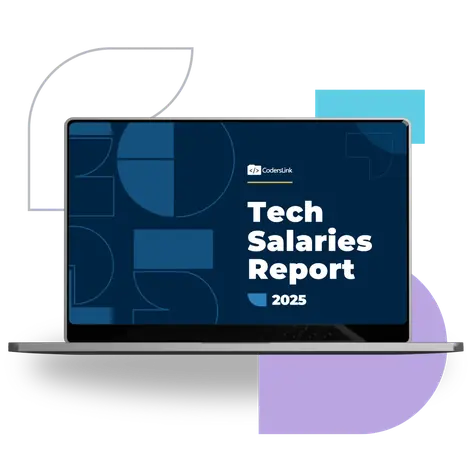
How can companies legally and effectively outsource their tech needs in offshore and nearshore countries? The answer may seem very involved, but it doesn’t have to be.
As the rise of the Employer of Record continues, many American companies are looking toward Latin America to outsource their software development, engineering, and general tech needs. Using an Employer of Record allows for quality and affordable tech talent worldwide.
Given the geographical proximity, cultural similarity, large qualified labor pool, and time zone alignments, Mexico is rapidly rising as the preferred choice for outsourcing quality tech talent.
Many companies have been using an Employer of Record (EOR) to hire remote work in other countries, but a change in Mexican law in May, 2021, has effectively made it illegal for foreign companies to use and be an Employer of Record.
This means that companies must either establish their own federal entity in Mexico, or work with a partner like CodersLink that is legally registered in both countries. Because CodersLink is federally incorporated in both the U.S. and Mexico, we are able to partner with companies seeking to outsource tech talent by providing an EOR service.
CodersLink has taken the EOR model and expanded it to a more holistic, effective, long term solution for outsourcing tech teams called Build-Operate-Transfer (BOT).
Before we explore BOT and its advantages to a standard EOR, let’s first explore what an EOR is and how it functions.
What is an Employer of Record?
An Employer of Record is a company that handles all of the hiring, HR, payroll, and local taxes for employees who have been hired remotely by a company in a foreign country.
A company seeking to utilize outsourced employees via an EOR would still manage the functions of the team members, but the EOR would handle and assume all of the risks involved with taxes, HR, and payroll.
This is much more beneficial than a simple staffing/payroll company because an EOR essentially operates on paper as the actual employer, allowing the EOR to take on all the local liabilities. An EOR acts as a buffer, preventing issues of non-compliance and labor violations.
Because foreign companies can no longer establish their own federal entity in Mexico they require a partner, such as CodersLink, to assume the position of the EOR.
While the EOR model has been shown to be very effective, there has been a growing trend in the tech industry and companies are now moving away from hiring one off employees for small tasks and projects, and are actively seeking to build whole teams that can augment and integrate with internal teams.
This takes us to the BOT model.
What is the Build-Operate-Transfer model?
CodersLink employs the BOT method to help companies build nearshore and offshore tech teams in Latin America, with a special focus on Mexico. Though CodersLink serves as the Employer of Record throughout the process, the BOT method is designed to allow companies to build and ultimately take permanent control over the teams they recruit.
CodersLink sets a stable foundation that accommodates scaling, and prepares the client and the team for seamless integration and transfer.
Forbes tells us the main idea of BOT is simple: share risks and reduce costs.
Let’s break down the B-O-T model into its three stages.
Stage 1: Build
In the build stage, the outsourcing partner recruits talent, creates a dedicated office space, and configures the equipment and technologies to fit the company’s specific requirements.
This stage includes developing a clear understanding between the EOR, also called the local partner, and the company. This ensures that the objectives, requirements, and expectations are all in place before beginning to build a team.
As this understanding of needs and expectations is established, the local partner can focus on recruiting and preparing the core team with communication channels and a responsibilities matrix.
While the build phase can be an ongoing component in the timeline as the staff grows according to the company’s needs, the main objective is to build and outfit the core team, which generally takes 3-6 months to complete.
Stage 2: Operate
During the Operate stage, we see the local partner functioning as the Employer of Record. At CodersLink, we offer a collaborative process so that the parent company has full control over the project, including assessments like key performance indicators, quality control, and software development.
While the company is now able to focus on their specific tech development needs, we manage everything related to staff and offices including contracts, regulations, recruitment, payroll, and cancellations.
This stage helps to establish the culture of the company with the staff, set expectations of best practices, and includes the knowledge transfer process.
Milestone features during this stage include periodic communications (daily, weekly, monthly, quarterly etc), regular reporting and updates necessary for project management, transparency in costs and processes, protection of client’s intellectual property, and the ability for the client to expand or reduce the team on demand.
Depending upon the size and scope of the project, and the evolution of the expansion, the operate stage of the BOT method typically takes 18-48 months to complete.
Stage 3: Transfer
During the transfer stage, the local partner yields all responsibilities and processes related to HR and office management back to the company. This happens when the company is ready to take the reins, and is legally authorized to operate in the country.
Keep in mind that the company was always the owner, the local partner simply created the foundation and handled the tedious housekeeping so that the company could more easily assimilate it’s offshore or nearshore team.
The transfer can happen at any time during the process, but CodersLink has found that the chances of a successful transfer are much higher if it occurs after 18 months of operation.
Key milestones and features of the transfer stage include clearly defining the pay and transfer fees for each employee, the transference of office space and equipment, establishment of legal commercial registration in a foreign country, and training/support in all HR processes.
Though this is the final stage, the client can continue to work with the outsourcing partner in a new capacity if required, such as continued staffing and on-demand talent.
Beyond the transfer
The BOT model is gaining popularity in the tech world as the holistic method to build out and integrate whole teams of quality talent in offshore and nearshore hubs, such as Mexico.
Going well beyond a standard Employer of Record, the BOT model gives complete control with every stage of development, even before the core team is assembled. This allows a gradual, stable, and rapid integration of offshore and nearshore tech teams to augment and join internal teams on complicated large scale projects.
Because the expansion phase can make or break companies, it’s important to use a trusted partner like CodersLink to set a stable foundation that won’t drain your company of essential time and resources. The outsourcing partner navigates all of the known hurdles in the local country, assuming all risks and liabilities, and prepares the client for a seamless transfer on an expedited timeline.
CodersLink empowers scaling startups and large companies alike by supporting every phase of building, growth, and management of high quality tech teams in Latin America. Through the use of direct placements, and remote staffing, we ensure that skill-gaps are filled and scaling needs are met.
Contact CodersLink today if you are ready to create your dedicated nearshore tech team.


